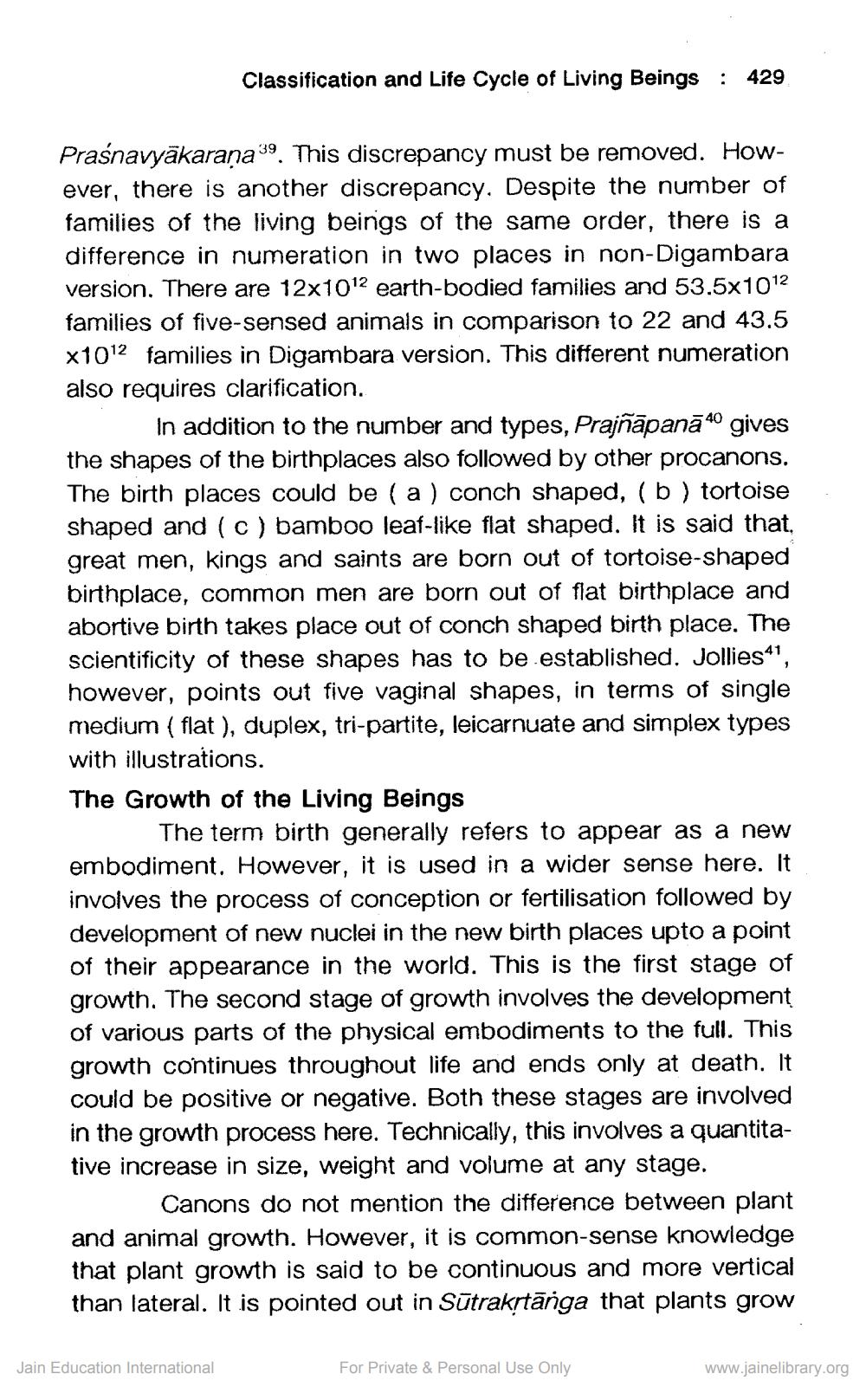________________
Classification and Life Cycle of Living Beings : 429
Praśnavyākarana 39. This discrepancy must be removed. However, there is another discrepancy. Despite the number of families of the living beings of the same order, there is a difference in numeration in two places in non-Digambara version. There are 12x1012 earth-bodied families and 53.5x1012 families of five-sensed animals in comparison to 22 and 43.5 x1012 families in Digambara version. This different numeration also requires clarification.
In addition to the number and types, Prajñāpanā 40 gives the shapes of the birthplaces also followed by other procanons. The birth places could be (a) conch shaped, (b) tortoise shaped and (c) bamboo leaf-like flat shaped. It is said that, great men, kings and saints are born out of tortoise-shaped birthplace, common men are born out of flat birthplace and abortive birth takes place out of conch shaped birth place. The scientificity of these shapes has to be established. Jollies, however, points out five vaginal shapes, in terms of single medium ( flat ), duplex, tri-partite, leicarnuate and simplex types with illustrations. The Growth of the Living Beings
The term birth generally refers to appear as a new embodiment. However, it is used in a wider sense here. It involves the process of conception or fertilisation followed by development of new nuclei in the new birth places upto a point of their appearance in the world. This is the first stage of growth. The second stage of growth involves the development of various parts of the physical embodiments to the full. This growth continues throughout life and ends only at death. It could be positive or negative. Both these stages are involved in the growth process here. Technically, this involves a quantitative increase in size, weight and volume at any stage.
Canons do not mention the difference between plant and animal growth. However, it is common-sense knowledge that plant growth is said to be continuous and more vertical than lateral. It is pointed out in Sūtrakrtānga that plants grow
Jain Education International
For Private & Personal Use Only
www.jainelibrary.org




